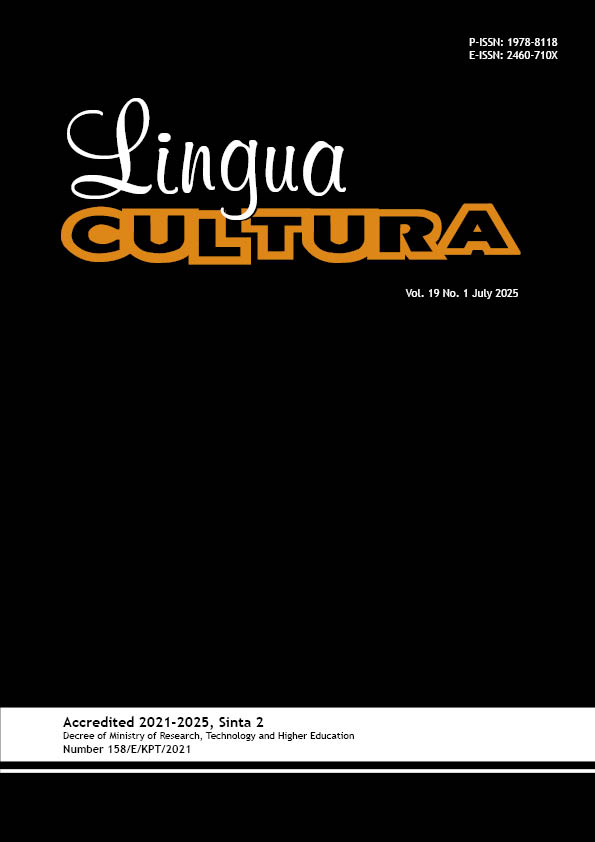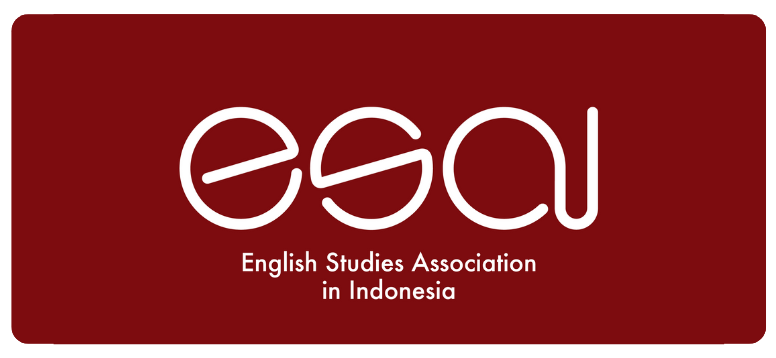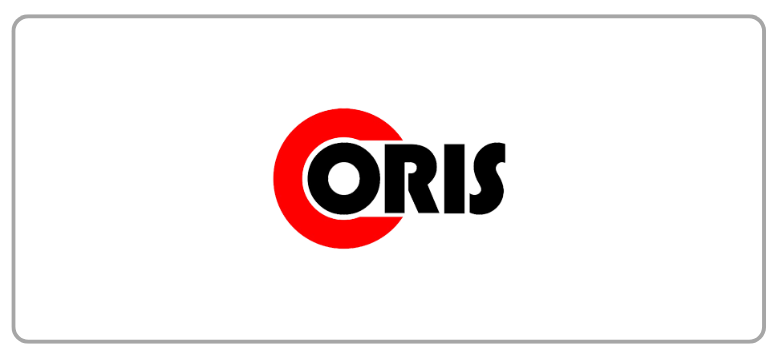“Kinō Nani Tabeta?” Defying the Complexity of Love in Romantic Relationships
DOI:
https://doi.org/10.21512/lc.v19i1.13192Keywords:
boys' love, commitment, difference, loveAbstract
The research aims to understand the concept of love represented in the Japanese movie Kinō Nani Tabeta? The movie, released in 2021, tells the story of a middle-aged homosexual couple in Tokyo, Shiro and Kenji, who are the main characters of the movie. This movie was chosen as an object of analysis because, unlike love relationships, which are typically recognized as romantic relationships between individuals of opposite sexes, the love relationships of the main characters are between individuals of the same sex. The method used in this research is phenomenology, which looks at the movie as a subject; as a world that is experienced by the viewer. In the world of Kinō Nani Tabeta?, love is a philosophical insight that is contemplated when the viewer is in the world of the movie. Love in Kinō Nani Tabeta? can be interpreted through the approaches of Irigaray and Bell Hooks, who understand love in terms of the existence of difference and the awareness of mutuality. The love expressed in this film is a relationship that transcends gender and fosters a familial bond, one based not only on biological ties but also on a commitment that prioritizes equality. Kinō Nani Tabeta? shows that the love of homosexual couples is also a love that is the basis of a familial relationship that is not limited to biological ties.
References
Amaki, Y. (2022). Promoting sexual and gender diversity through the portrayal of sexual and gender minority youths in media: The views of college students in Japan. Asian Review, 35(2), 23-48. https://so01.tci-thaijo.org/index.php/arv/issue/download/17362/4595#page=27
Candiotto, L., & De Jaegher, H. (2021). Love in-between. Journal of Ethics, 25(4), 501-524. https://doi.org/10.1007/s10892-020-09357-9
Clemente, M., Gandoy-Crego, M., Bugallo-Carrera, C., Reig-Botella, A., & Gomez-Cantorna, C. (2020). Types of love as a function of satisfaction and age. PsyCh Journal, 9(3), 402-413. https://doi.org/10.1002/pchj.338
Holt, J. (2020). Intuition in creative film editing practice: using phenomenology to explain editing as an embodied experience. Media Practice and Education, 21(2), 121-132. https://doi.org/10.1080/25741136.2019.1694382
Hooks, B. (2018). All about love. William Morrow, an imprint of Harper Collins Publishers.
Irigaray, L. (2016). I love to you: Sketch for a felicity within history. Routledge.
Keane, N. (2020). Dasein and world: Heidegger’s reconceiving of the transcendental after Husserl. Journal of Transcendental Philosophy, 1(3), 265-287. https://doi.org/10.1515/jtph-2020-0012
Kuula, L., Partonen, T., & Pesonen, A. K. (2020). Emotions relating to romantic love—further disruptors of adolescent sleep. Sleep Health, 6(2), 159-165. https://doi.org/10.1016/j.sleh.2020.01.006
Loht, S. (2017). Phenomenology of film: a Heideggerian account of the film experience. Lexington Books.
Loht, S. (2024). Response to critical views of phenomenology of film. Film-Philosophy, 28(1), 113-130. https://doi.org/10.3366/film.2024.0258
Medine, C. M. J. (2022). bell hooks, black feminist thought, and black Buddhism: A tribute. Journal of World Philosophies, 7(1), 187-196. https://doi.org/10.2979/jourworlphil.7.1.15
Morikawa, M. (2022). The effective paratextual messages of the Japanese gay TV drama series Ossan’s Love. Expert Journal of Marketing, 10(1), 11-20. https://marketing.expertjournals.com/ark:/16759/EJM_1002morikawa11-20.pdf
Pilão, A. C. (2021). Conjugalities and sexualities in conflict: Monogamy and polyamory among lgbt groups. Vibrant Virtual Brazilian Anthropology, 18, 1-19. https://doi.org/10.1590/1809-43412021V18A503
Quaranta, C. (2024). In the mood for Heideggerian boredom? Film viewership as being-in-the-world. Film-Philosophy, 28(1), 31-46. https://doi.org/10.3366/film.2024.0253
Sandrussi, A. (2024). Dasein and the question of the heterogenous film viewer: A commentary on Loht’s Heideggerian phenomenology of film. Film-Philosophy, 28(1), 62-78. https://doi.org/10.3366/film.2024.0255
Shimauchi, S. (2024). “It is universal love beyond homosexuality and gender difference”: critical media discourse analysis of boys’ love dramas in Japan. Feminist Media Studies, 00(00), 1-15. https://doi.org/10.1080/14680777.2024.2361042
Sinnerbrink, R. (2024). Introduction: Heidegger and the phenomenology of film. Film-Philosophy, 28(1), 1-10. https://doi.org/10.3366/film.2024.0251
Sood, M. S., & Gupta, A. (2024). Exploring the impact of family environment on quality of life, wellness, and self-concept: A comprehensive analysis. Exploring The Impact of Family Environment on Quality of Life, Wellness, and Self-Concept: A Comprehensive Analysis, 27(3), 49-62. https://doi.org/10.53555/AJBR.v27i3S.1719
Squire, D. D., Blansett, R., & Wright-Mair, R. (2022). Centering love as the foundation of a racially just and decolonizing student affairs. Current Issues in Education, 23(2), 1-20. https://doi.org/10.14507/cie.vol23iss2.2033
Thorgeirsdottir, S. (2022a). Luce Irigaray’s philosophy of the child and philosophical thinking for a new era. Sophia, 61(1), 203-218. https://doi.org/10.1007/s11841-022-00920-5
Thorgeirsdottir, S. (2022b). Putting the embodied turn in philosophy to practice: Luce Irigaray’s response to Nietzsche’s philosophy of embodied thinking. Nietzsche-Studien, 51(1), 271-295. https://doi.org/10.1515/nietzstu-2021-2017
Weichert, K. (2021). Phenomenology of film experience in relation to corporeal involvement in the world. Journal of Comparative Literature & Aesthetics, 44(3), 95-106.
Downloads
Published
How to Cite
Issue
Section
License
Copyright (c) 2025 Marisa Rianti Sutanto, Ethel Deborah Lewerissa, Jessica Priscilla Nangoi

This work is licensed under a Creative Commons Attribution-ShareAlike 4.0 International License.
Authors who publish with this journal agree to the following terms:
a. Authors retain copyright and grant the journal right of first publication with the work simultaneously licensed under a Creative Commons Attribution License - Share Alike that allows others to share the work with an acknowledgment of the work's authorship and initial publication in this journal.
b. Authors are able to enter into separate, additional contractual arrangements for the non-exclusive distribution of the journal's published version of the work (e.g., post it to an institutional repository or publish it in a book), with an acknowledgment of its initial publication in this journal.
c. Authors are permitted and encouraged to post their work online (e.g., in institutional repositories or on their website) prior to and during the submission process, as it can lead to productive exchanges, as well as earlier and greater citation of published work.
USER RIGHTS
All articles published Open Access will be immediately and permanently free for everyone to read and download. We are continuously working with our author communities to select the best choice of license options, currently being defined for this journal as follows: Creative Commons Attribution-Share Alike (CC BY-SA)


















